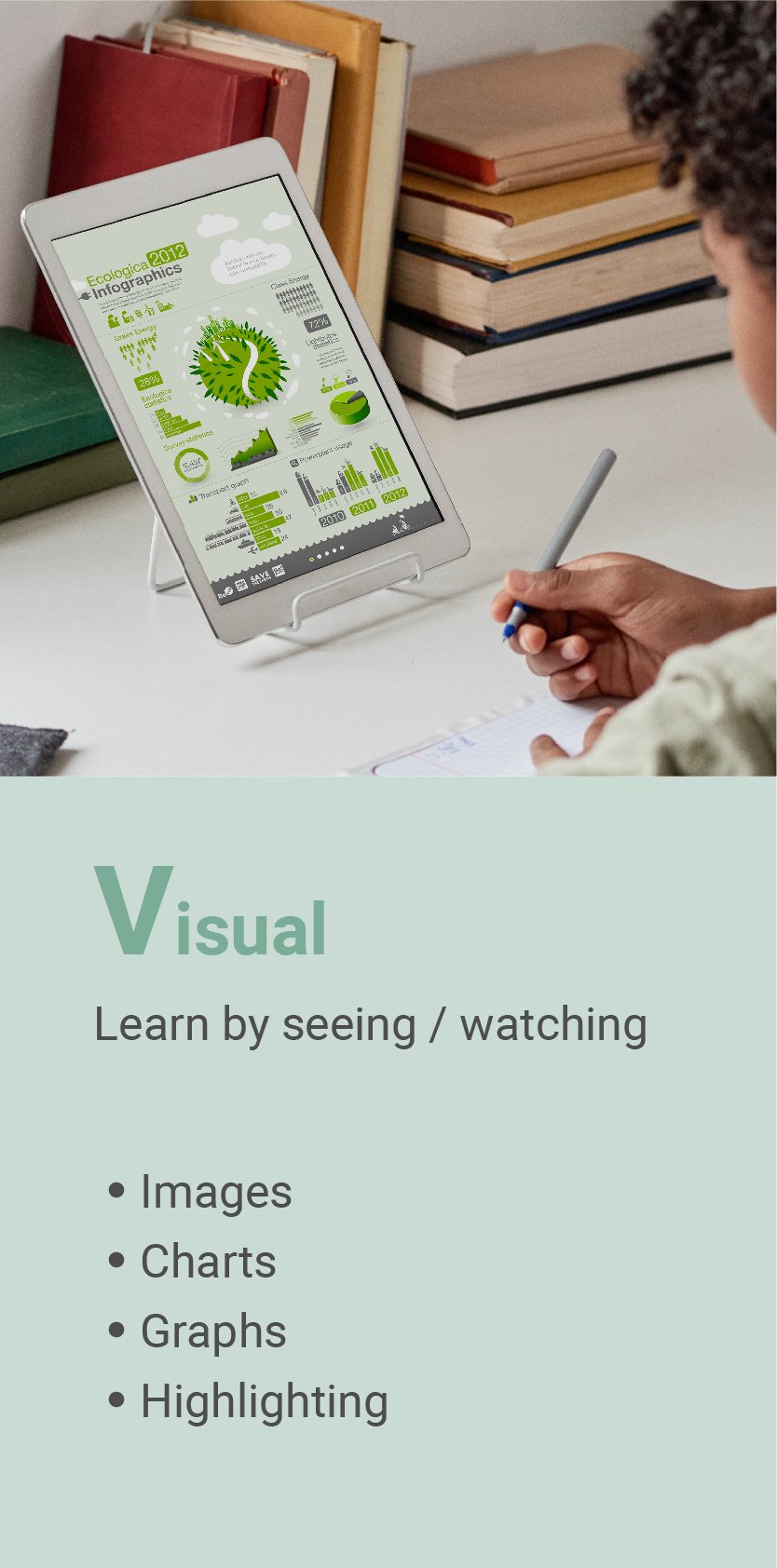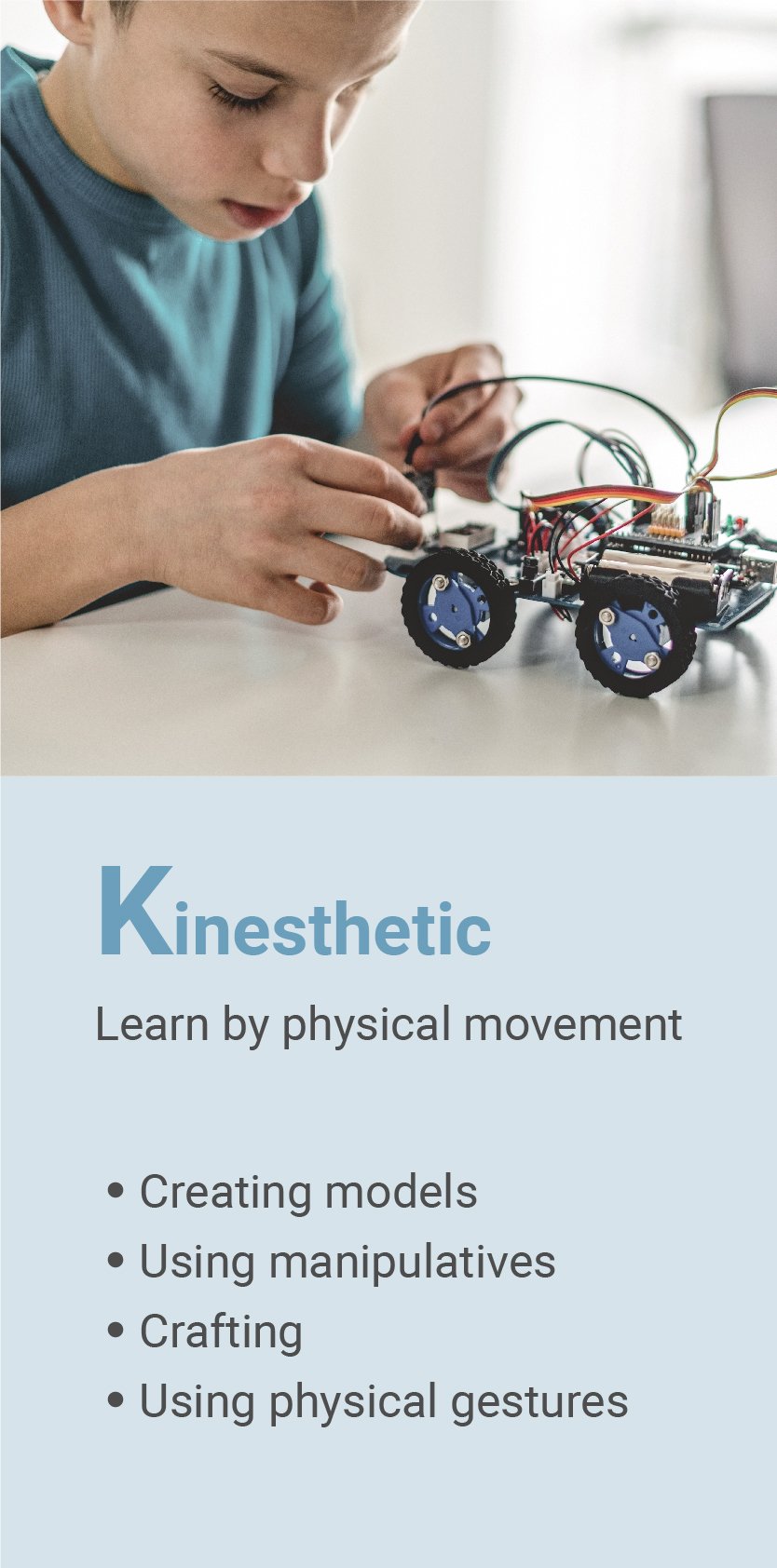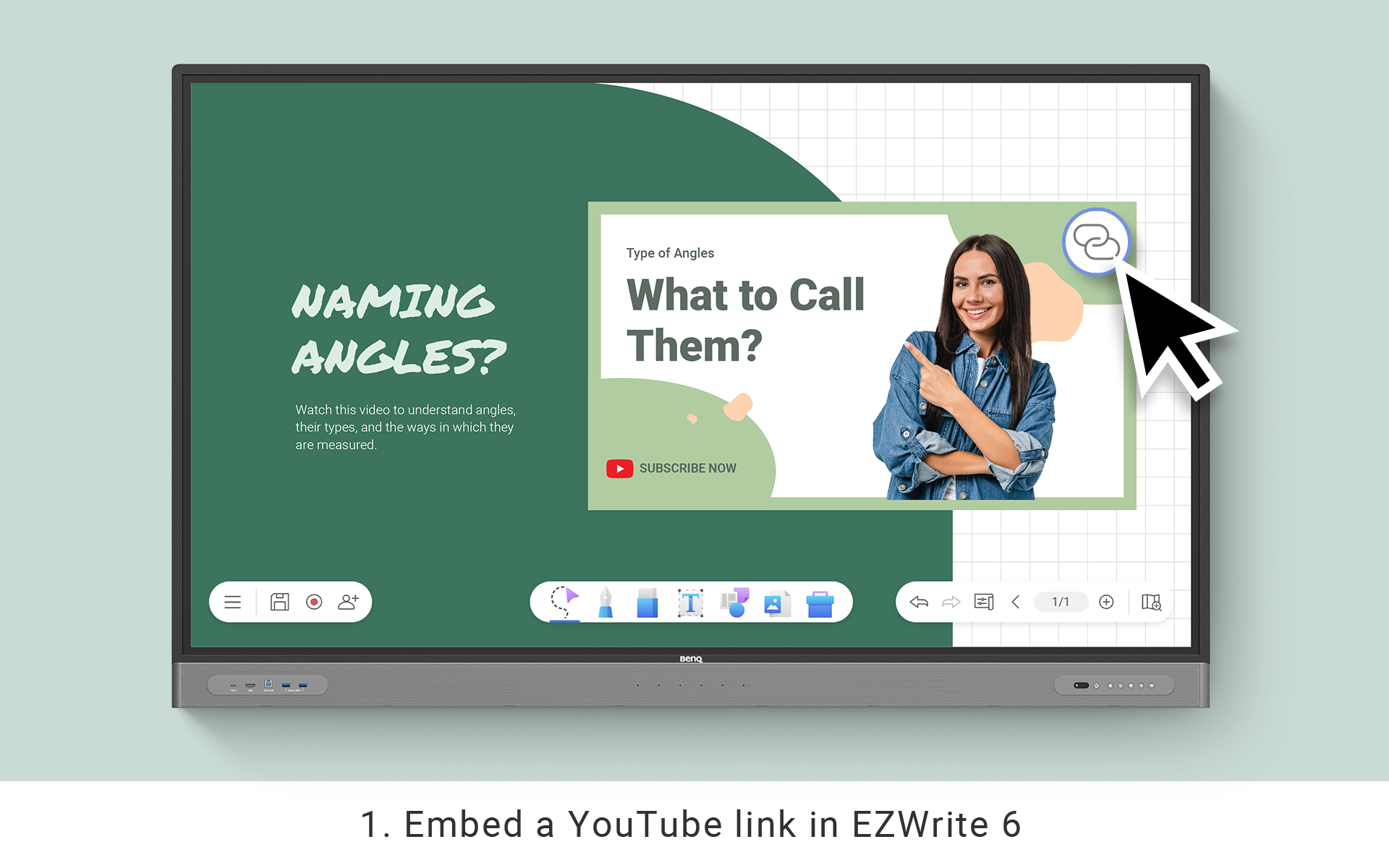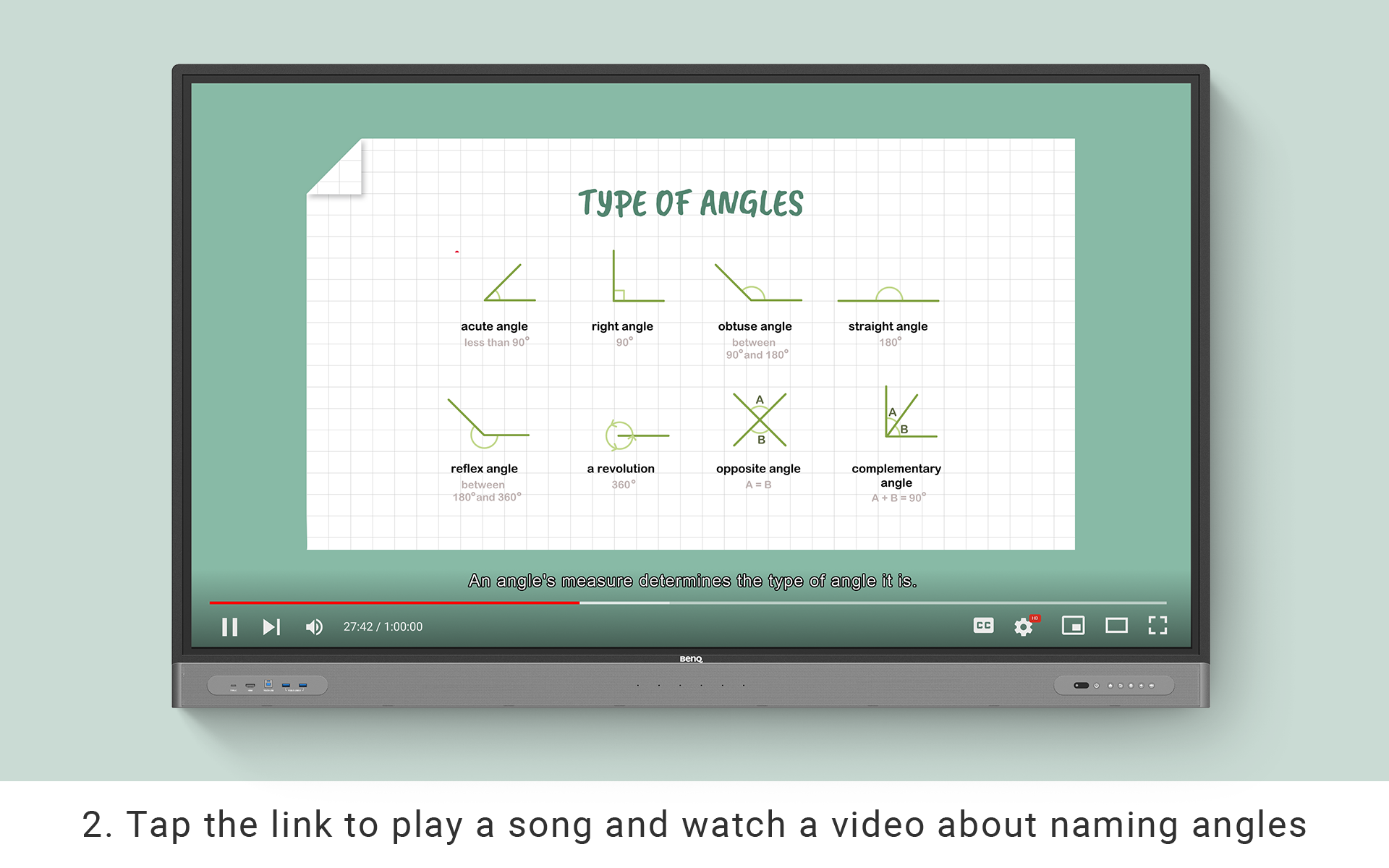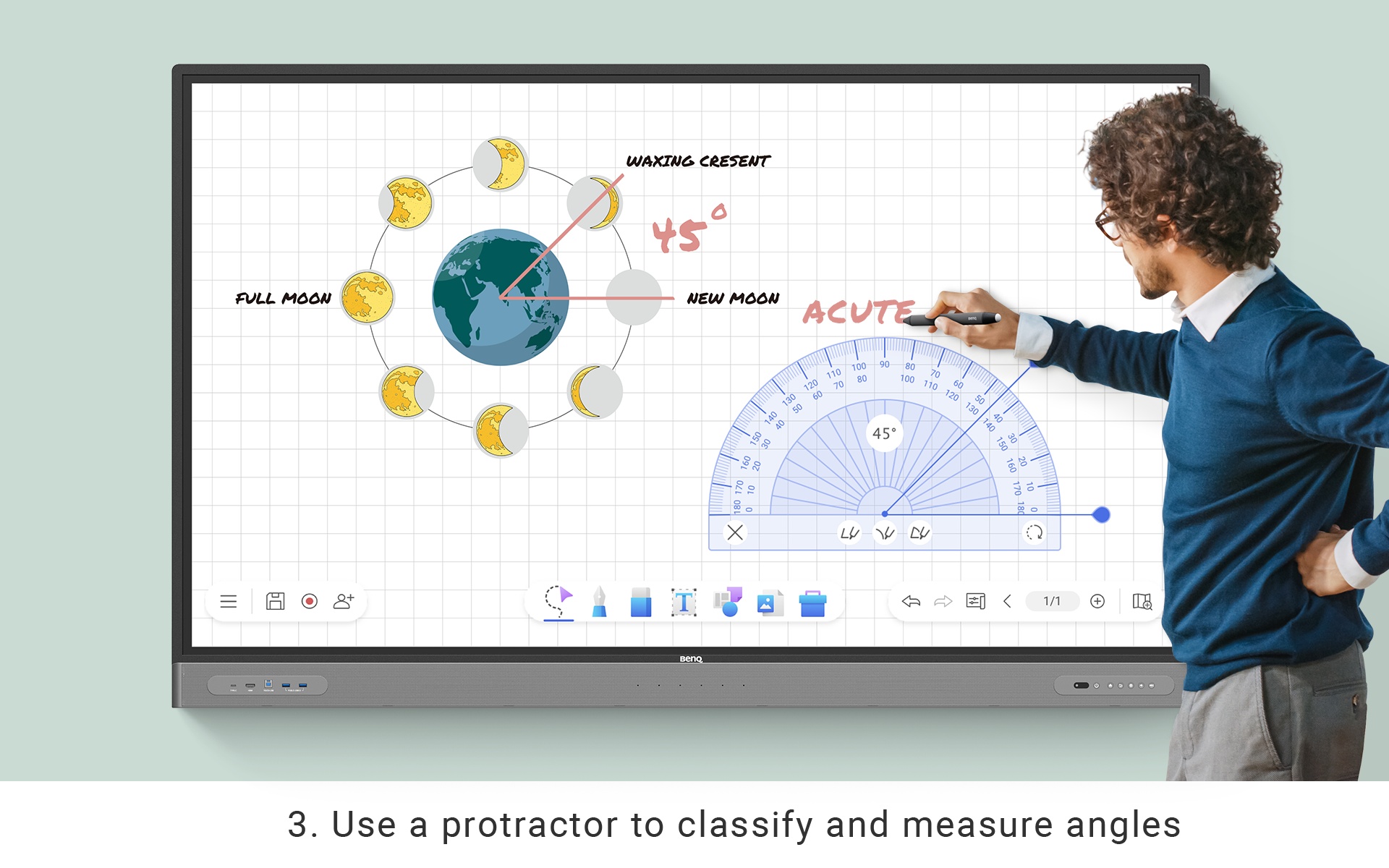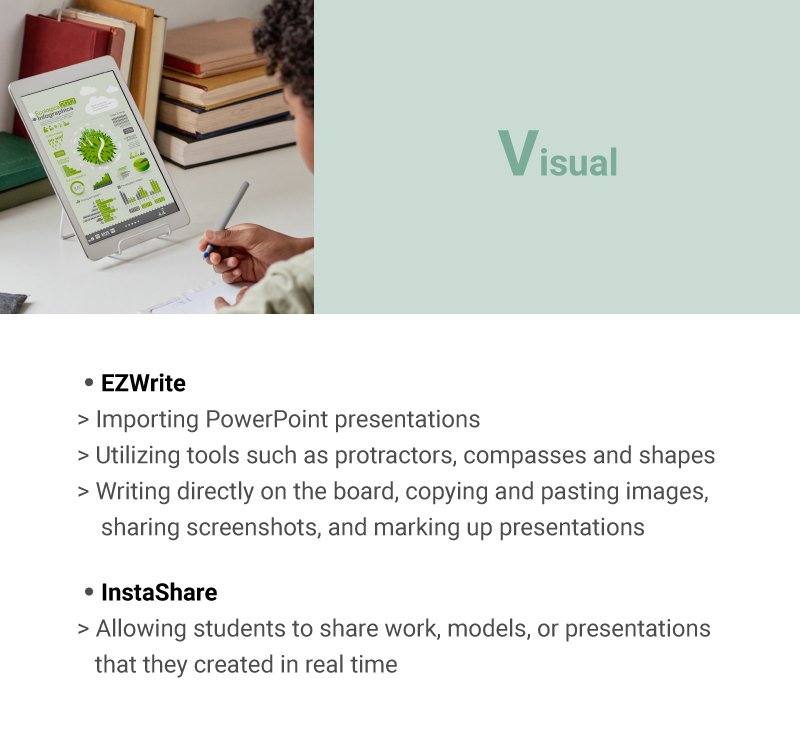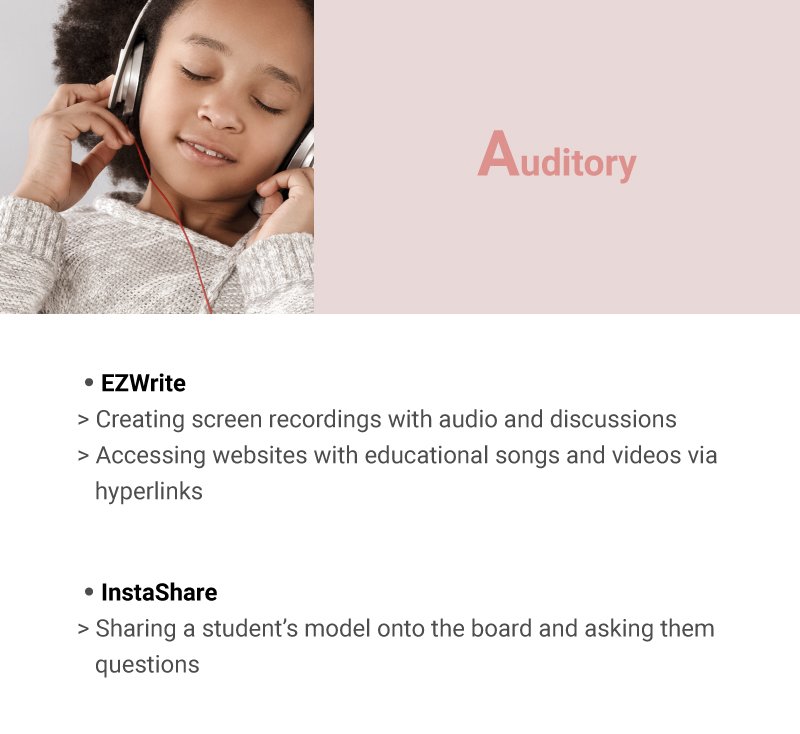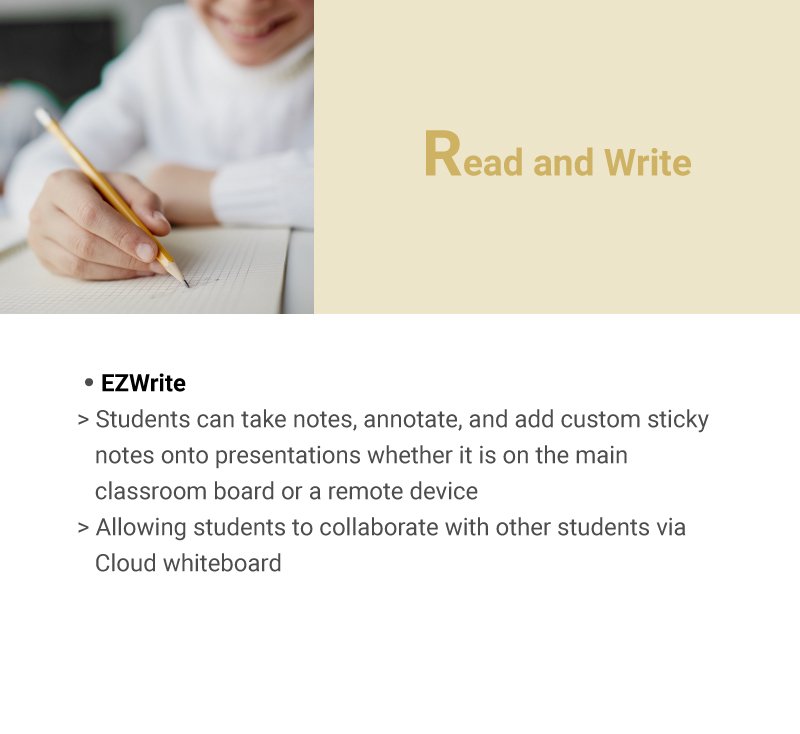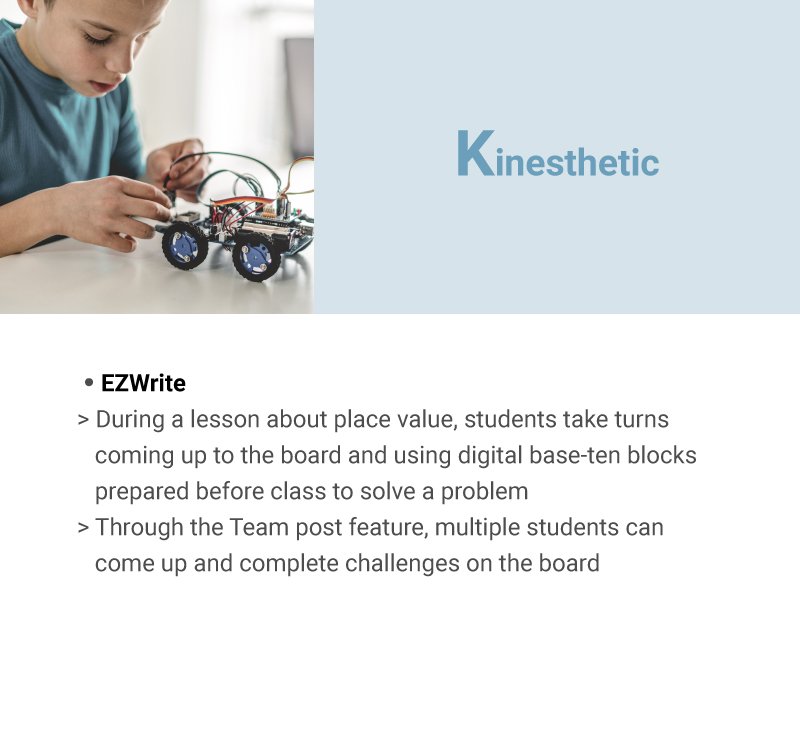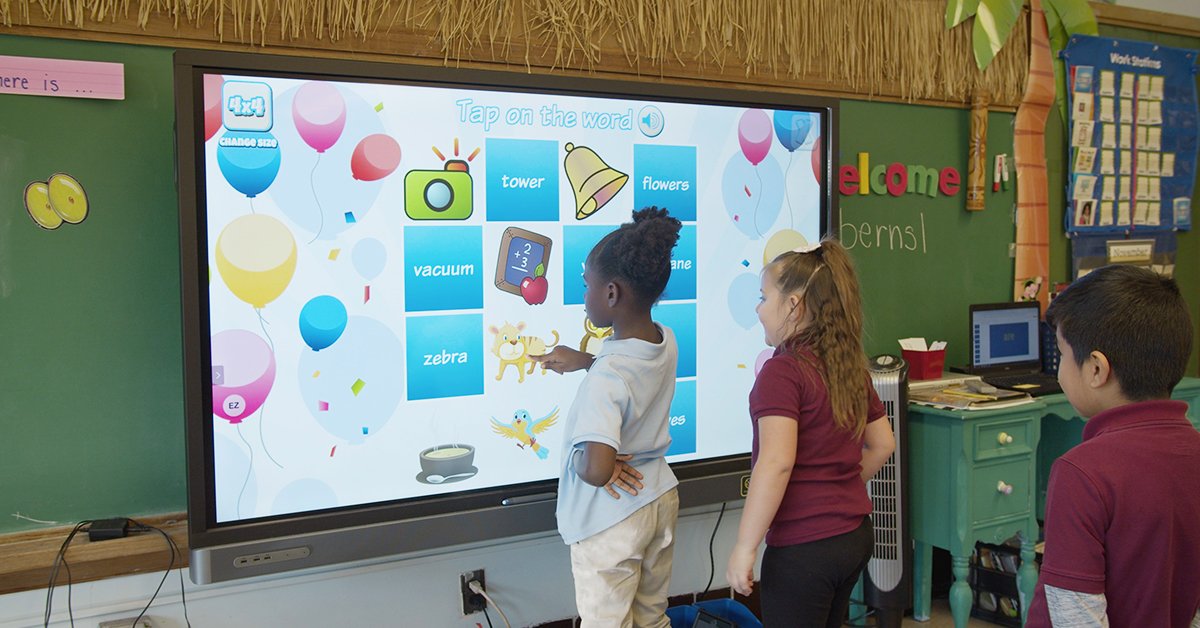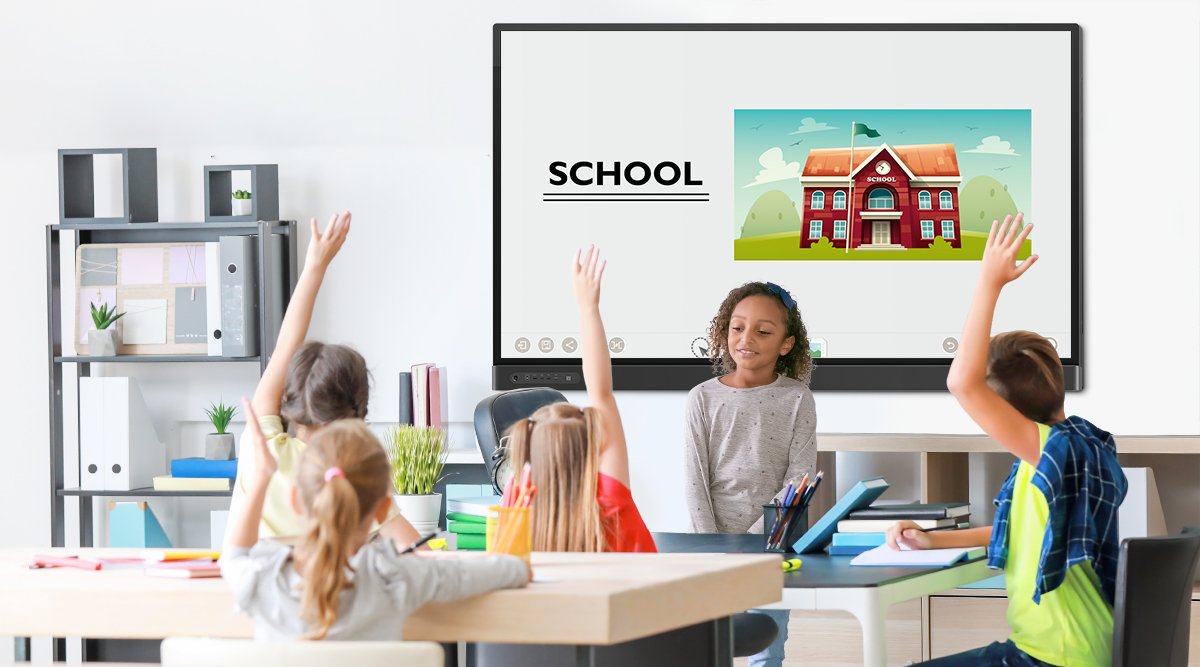- BenQ
- 2022-08-08
Identifying the 4 Types of Learners
Every student has a unique set of strengths and needs when it comes to their education. Teachers should celebrate these differences and ensure every child has their learning needs met. To engage all types of learners, it is important to understand each learning style and incorporate strategies for students’ individual success.
An individual’s learning style reflects the way in which they gain and retain new information and skills. According to the VARK model, there are 4 types of learners: visual, auditory, read and write, and kinesthetic (Hussain, 2017). Most likely, every classroom will be a melting pot of learning styles with each one present.
With EdTech being at the forefront of modern education, utilizing technology can be a powerful and effective tool for adapting and differentiating lessons. A digital tool like the BenQ Board can engage different types of learning styles and present information in ways that will make a huge impact.
What Is a Visual Learner?
Visual learners are students who learn best from seeing and watching. Their sense of sight is what drives their acquisition of knowledge.
How can educators accommodate visual learners’ needs?
To meet the needs of visual learners, make sure to provide visual tools. Visual learners benefit from written instructions, visual presentations, images, charts, graphs, highlighting, color coding, and any other visual assist. They need to see and contextualize concepts in order for them to make sense of subject matter in their head.
Which BenQ Board features will visual learners benefit from?
While teaching a lesson on categorizing angles, a classroom teacher decides to use the BenQ Board to bring the lesson to life. First, they access YouTube on their BenQ Board and play a song and video about classifying angles. Then, they import a PowerPoint into the EZWrite 6 software showing angles, and use a protractor to classify and measure angles. Light bulbs are going off as students visualize and contextualize the lesson. With features like EZWrite 6, the education-focused BenQ Board is packed full of tools to bring your lessons to life. EZWrite 6 allows teachers to write directly on the board, copy and paste images, share screenshots, and mark up presentations in real time. The board comes equipped with tools such as protractors, compasses, shapes, and other visual aids. These can be layered over any lesson or presentation to paint a picture for students when needed most. With InstaShare 2, teachers can share real-time recordings of their surroundings, allowing students to share work, models, or presentations that they created. BenQ Boards offer endless possibilities to spruce up your lesson plans with added visual features.
What Is an Auditory Learner?
Auditory learners rely the most on their sense of hearing. Auditory learners are more likely to remember what they hear than what they see.
How can educators accommodate auditory learners’ needs?
Auditory learners rely heavily on interpreting what they hear. They need intentional auditory cues incorporated into lessons. One strategy that benefits auditory learners is oral repetition. Whether its repeating directions, key vocabulary, or any other content, the more auditory learners hear information, the more likely it is to stick. Teachers should also incorporate music, rhymes, and humor into their lessons to help their auditory learners retain new knowledge. Additionally, discussions are key to auditory learners. Whether its class-wide, small group, or partner discussions, allowing students to talk through problems and hear solutions from others will appeal to their auditory needs.
Which BenQ Board features will auditory learners benefit from?
While learning about fractions, third grade students organize packs of Skittles to see what fraction of the pack each color makes up. The teacher uses InstaShare 2 to project a student’s model onto the board. “What fraction of your Skittles are yellow? How do you know? Class, do you agree?” As they collectively discuss the breakdown of the colorful candy, the explanations provided resonate in the minds of auditory learners. The more they discuss and hear the outcomes, the more likely it is to stick. BenQ Boards offer the opportunity for shared discussion and group activities that help auditory learners thrive. Additionally, they provide the ability to access third party websites with educational video content like songs, videos, and poems. Students can even create screen recordings with audio and discussions on EZWrite 6 and share them to others! Each of these opportunities accommodates auditory learners.
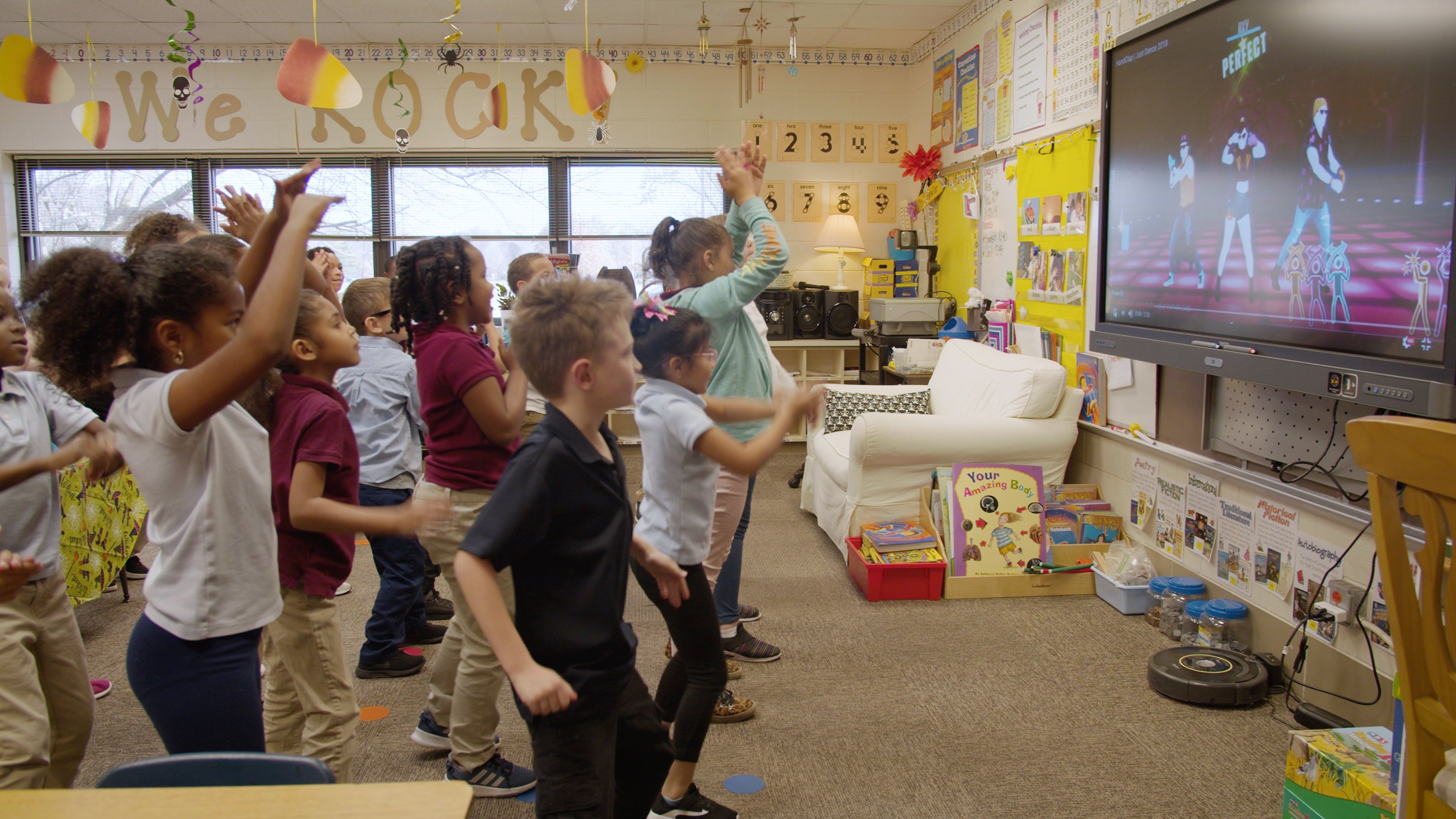
What Is a Read and Write Learner?
Read and write learners are considered traditional, textbook types of learners. They have high literary abilities and retain information through repeated reading and writing.
How can educators accommodate read and write learners’ needs?
Read and write learners take it back to the basics. These are students who enjoy the traditional methods of studying such as reading textbooks and writing reports. They enjoy taking notes, learning from presentations, reading literature, and conducting research.
Which BenQ Board features will read & write learners benefit from?
The EZWrite 6 feature of the BenQ Board is perfect for read and write learners. They are able to take notes, annotate, and write directly onto presentations whether it is on the main classroom board or a remote device. The board even has a “sticky note” feature allowing students to add a custom sticky note onto digital content. Read and write students can use the BenQ Board to access educational websites and virtual textbooks. Additionally, the cloud whiteboard allows students to collaborate with others.
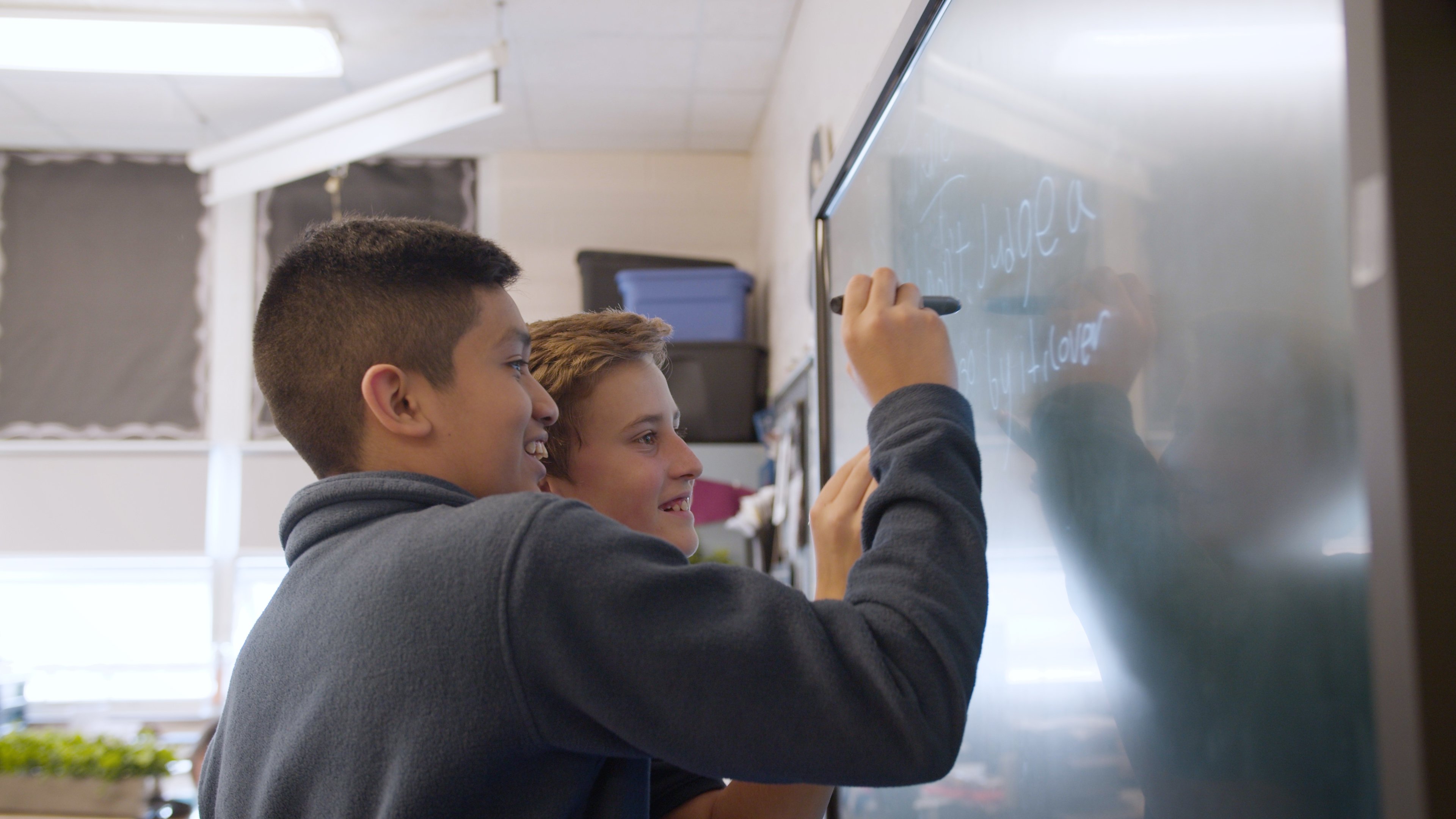
What Is a Kinesthetic Learner?
Kinesthetic learners are individuals who discover the world and gain knowledge best through movement. Their sense of touch and physical expression allows them to retain information.
How can educators accommodate kinesthetic learners’ needs?
Kinesthetic learners need physical movement and touch to process information. These are your students who seek hands-on examples and explanations. Activities that incorporate movement and hands-on participation, like creating models, using manipulatives, crafting, or using physical gestures to aid memory are great ways to meet the needs of kinesthetic learners.
Which BenQ Board features will kinesthetic learners benefit from?
During a lesson about place value, students take turns coming up to the BenQ Board and using digital base-ten blocks prepared before class to solve a problem. Using EZWrite 6 tools, kindergarteners practice tracing different letters on the board. To aid her lesson on lines and angles, a teacher pulls up a YouTube video where students practice making parallel lines and intersecting lines with their arms. All of these are different examples of the BenQ Board meeting kinesthetic learners’ needs. Through the Team post feature of EZWrite 6, multiple students can even come up and complete challenges on the board in a competitive format. The board allows opportunities for movement and touch that help kinesthetic learners retain information.
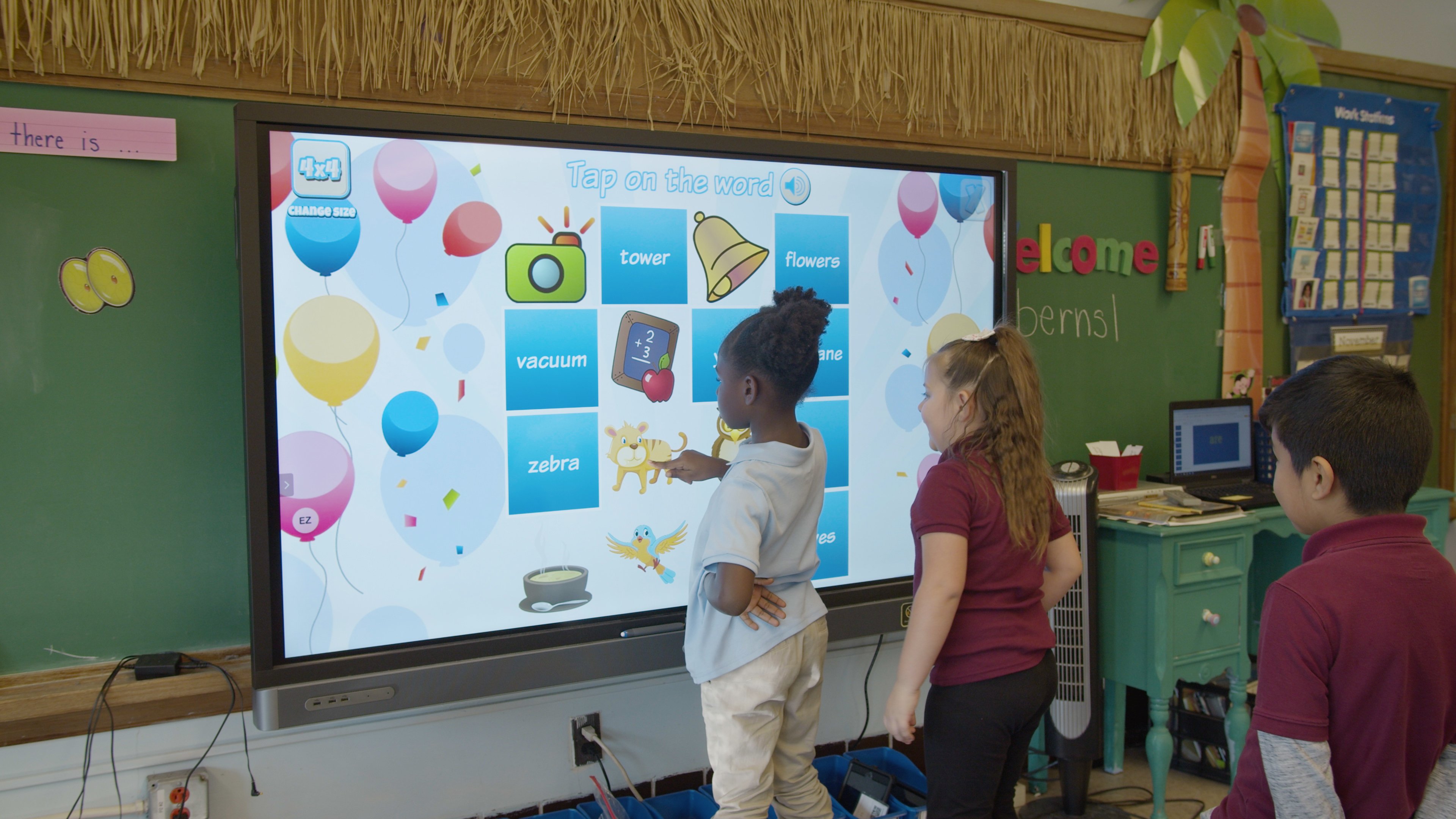
While research suggests that individuals have a predominant learning style, it also highlights that most students will also be a mixture of all 4 learning styles to some extent. Consequently, students need accommodations and strategies for each of the 4 learning styles in order to thrive. BenQ understands that and can offer a solution to engage all learners in a classroom. Teachers can use the innovative and engaging BenQ Board features to capture the attention of students and make learning fun! With the help of a BenQ Board, you can make an incredible impact in the classroom and help students unlock their full potential.
Reference
Hussain, I. (2017) Pedagogical Implications of VARK Model of Learning. Journal of Literature, Languages and Linguistics, 38. 33–37.
Related Articles
Read more-
Kankakee School District is Enabling Competency-Based Education with BenQ Interactive Display Classroom Technology
-
Best Interactive Displays for Classrooms in 2022
-
How to Better Engage the 4 Types of Learners? [Examples]
